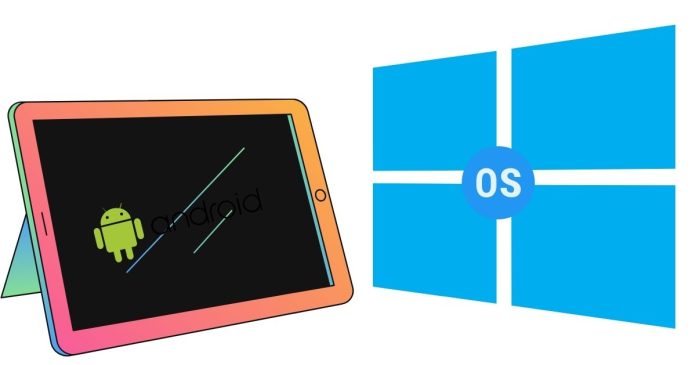Android and Windows are two different operating systems designed for distinct purposes and devices. Here are the key differences between them:
1. Platform Type
- Android: Primarily designed for mobile devices such as smartphones and tablets. It is an open-source operating system based on Linux.
- Windows: Primarily designed for personal computers (PCs), laptops, and tablets. It is a proprietary OS developed by Microsoft.
2. User Interface
- Android: Features a touch-based interface, optimized for smaller screens like smartphones and tablets. It includes home screens with widgets, app icons, and customizable features.
- Windows: Offers a more traditional desktop interface with a taskbar, Start menu, and windows for multitasking. The modern version (Windows 10/11) has adapted to touch interfaces for tablets and 2-in-1 devices.
3. App Ecosystem
- Android: Apps are typically distributed through the Google Play Store, though other third-party stores or sideloading are possible. Android supports a wide range of apps optimized for mobile.
- Windows: Apps are generally installed via the Microsoft Store, but users can also download and install software from other sources. Windows supports a large variety of desktop applications, as well as universal apps that work on both PCs and tablets.
4. Customization
- Android: Highly customizable in terms of home screens, themes, widgets, and system settings. Users can also root Android devices to gain more control.
- Windows: Offers some customization options, particularly with the desktop environment (e.g., wallpaper, taskbar, themes), but it’s generally less flexible than Android when it comes to system-level customizations.
5. Hardware Compatibility
- Android: Runs on a wide range of hardware from different manufacturers like Samsung, Google, Huawei, etc.
- Windows: Primarily runs on devices from PC manufacturers such as Dell, HP, Lenovo, etc., although it also supports some tablet hardware.
6. Software and System Updates
- Android: Updates are often dependent on the device manufacturer and carrier, which can result in delayed or inconsistent updates across devices.
- Windows: Regular system updates and security patches are provided directly from Microsoft, but users have more control over when they install updates compared to Android.
7. Security
- Android: Security features include app sandboxing, regular security updates, and Google Play Protect, but Android devices are more prone to malware and security vulnerabilities due to their open-source nature and varied hardware.
- Windows: Security is handled through built-in features like Windows Defender, BitLocker encryption, and frequent security updates. However, Windows has been historically more targeted by malware due to its large user base.
8. Performance
- Android: Optimized for mobile devices with lower processing power compared to PCs, focusing on battery efficiency.
- Windows: Optimized for higher-performance tasks on PCs, capable of handling demanding software, gaming, and multitasking efficiently.
9. Development and Programming
- Android: Development is typically done in Java, Kotlin, or C++, and apps are designed for mobile touch interfaces.
- Windows: Development is often done in languages like C++, C#, and Python, with a focus on more traditional computing needs, including desktop, gaming, and enterprise applications.
10. Usage
- Android: Designed for casual usage, communication, entertainment, and basic productivity on the go.
- Windows: Designed for more comprehensive tasks, including professional work, content creation, gaming, and advanced computing.
In short, Android is a mobile-centric, customizable, open-source operating system, while Windows is a desktop-based, robust, proprietary operating system designed for PCs and tablets. Each has its strengths depending on the device and use case.


